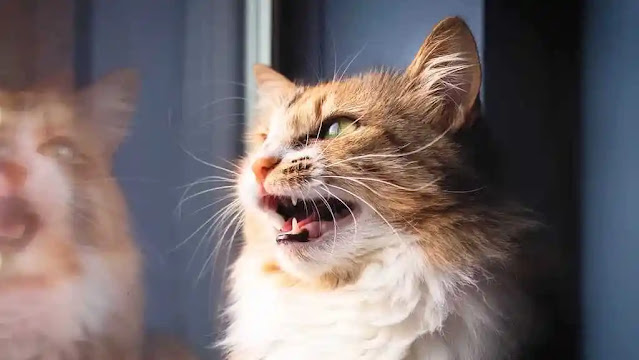little grunts and squeaks from my cat
Cat vocalizations
Have you ever wondered what your cat is trying to tell you when it makes those little grunts and squeaks? Cat vocalizations are a fascinating aspect of feline communication. Understanding these sounds can help you decipher your cat’s feelings and needs. In this article, we will explore different types of cat noises and discuss the meanings behind them.
Types of cat noises
Cats are known for their wide range of vocalizations.
Here are some common types of cat noises:
1. Meowing: Meowing is perhaps the most familiar sound that cats make. It can have different meanings depending on the tone and context. Cats often meow to get attention, express hunger, or communicate with humans.
2. Purring: Purring is a unique vocalization that cats make when they are content and relaxed. It is often associated with feelings of happiness and comfort. However, cats can also purr when they are anxious or in pain.
3. Chirping: Chirping is a high-pitched sound that cats make when they are excited or hunting. It is commonly heard when cats observe birds or other small animals through a window.
4. Hissing: Hissing is a defensive vocalization that cats use to warn others or express fear and aggression. It is often accompanied by a posture with raised fur and bared teeth.
5. Yowling: Yowling is a loud and drawn-out sound that cats make when they are in distress or seeking attention. It is commonly heard during mating or when cats are frustrated.
Excessive cat meowing
If your cat is excessively meowing, it may indicate an underlying issue.
Here are some possible reasons for excessive cat meowing:
1. Hunger or thirst: Cats may meow excessively when they are hungry or thirsty. Make sure your cat has access to fresh food and water at all times.
2. Attention-seeking: Cats are known for their demanding nature. If they feel ignored or want something, they may resort to excessive meowing to get your attention.
3. Stress or anxiety: Cats may meow excessively when they are stressed or anxious. Changes in their environment, such as moving to a new home or the presence of a new pet, can trigger this behavior.
4. Medical issues: Excessive meowing can be a sign of an underlying health problem. If your cat’s meowing is accompanied by other symptoms like lethargy or loss of appetite, it’s important to consult a veterinarian.
Cat sounds explained
Now, let’s explore some of the common cat sounds and their meanings:
1. Short meow: A short meow is often a greeting or a way for a cat to say “hello.”
2. Long meow: A long meow may indicate that your cat is in distress or needs something from you, such as food or attention.
3. High-pitched meow: A high-pitched meow is often a sign of excitement or eagerness.
4. Low-pitched meow: A low-pitched meow can indicate that a cat is unhappy or annoyed.
5. Trilling: Trilling is a pleasant, melodic sound that cats make to show happiness and affection. It is often accompanied by purring.
6. Growling: Growling is a warning sound that cats make when they feel threatened or want to establish dominance.
7. Chattering: Chattering is a unique sound that cats make when they observe prey, such as birds or squirrels. It is often a combination of chattering teeth and short, rapid meows.
Cat language decoded
Cats use a complex system of vocalizations to communicate with each other and with humans. While it’s impossible to fully decode their language, understanding some of the common sounds can help you better understand your furry friend.
It’s important to pay attention to the context and body language accompanying the cat’s vocalizations. For example, a cat may make a short meow while rubbing against your legs, indicating that it wants attention or affection.
Cats also use non-vocal cues, such as body posture, tail position, and facial expressions, to communicate. Combining these cues with their vocalizations can provide a more comprehensive understanding of their needs and emotions.
Deciphering cat meows
Deciphering cat meows can be a challenging task, but with time and observation, you can become more proficient in understanding your cat’s vocalizations.
Here are some tips to help you decode your cat’s meows:
1. Pay attention to the pitch and tone: Cats vary the pitch and tone of their meows to convey different meanings. Higher-pitched meows are often associated with excitement or urgency, while lower-pitched meows may indicate annoyance or dissatisfaction.
2. Consider the context: The context in which your cat meows can provide valuable clues to its meaning. For example, if your cat meows at the door, it may want to be let outside.
3. Observe body language: Cats communicate not only through vocalizations but also through body language. Pay attention to your cat’s posture, tail movements, and facial expressions to gain a deeper understanding of its intentions.
4. Keep a journal: Keeping a journal of your cat’s vocalizations and the corresponding situations can help you identify patterns and associations. Over time, you may start recognizing certain meows and their meanings.
Understanding cat noises
Understanding cat noises is an essential part of being a cat parent. By familiarizing yourself with the different types of cat vocalizations and their meanings, you can deepen the bond with your feline companion.
Remember that every cat is unique, and their vocalizations may vary. What may be true for one cat may not apply to another. Take the time to observe and listen to your cat, and you’ll soon develop a better understanding of their individual language.
So, the next time your cat makes little grunts and squeaks, try to decipher their message and respond accordingly. Your furry friend will appreciate your efforts to understand them better.













